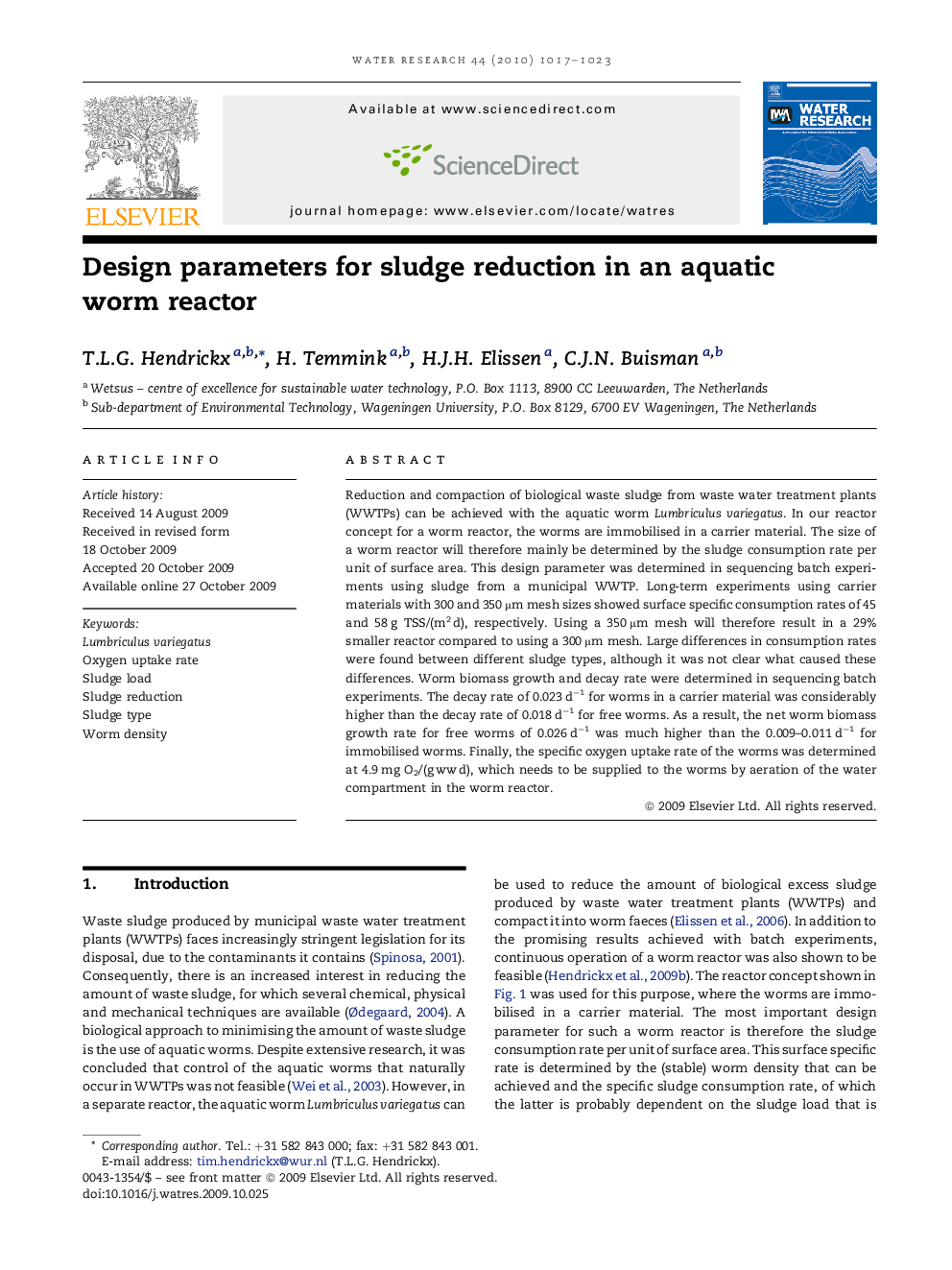| کد مقاله | کد نشریه | سال انتشار | مقاله انگلیسی | نسخه تمام متن |
|---|---|---|---|---|
| 4482661 | 1316865 | 2010 | 7 صفحه PDF | دانلود رایگان |

Reduction and compaction of biological waste sludge from waste water treatment plants (WWTPs) can be achieved with the aquatic worm Lumbriculus variegatus. In our reactor concept for a worm reactor, the worms are immobilised in a carrier material. The size of a worm reactor will therefore mainly be determined by the sludge consumption rate per unit of surface area. This design parameter was determined in sequencing batch experiments using sludge from a municipal WWTP. Long-term experiments using carrier materials with 300 and 350 μm mesh sizes showed surface specific consumption rates of 45 and 58 g TSS/(m2 d), respectively. Using a 350 μm mesh will therefore result in a 29% smaller reactor compared to using a 300 μm mesh. Large differences in consumption rates were found between different sludge types, although it was not clear what caused these differences. Worm biomass growth and decay rate were determined in sequencing batch experiments. The decay rate of 0.023 d−1 for worms in a carrier material was considerably higher than the decay rate of 0.018 d−1 for free worms. As a result, the net worm biomass growth rate for free worms of 0.026 d−1 was much higher than the 0.009–0.011 d−1 for immobilised worms. Finally, the specific oxygen uptake rate of the worms was determined at 4.9 mg O2/(g ww d), which needs to be supplied to the worms by aeration of the water compartment in the worm reactor.
Journal: Water Research - Volume 44, Issue 3, February 2010, Pages 1017–1023